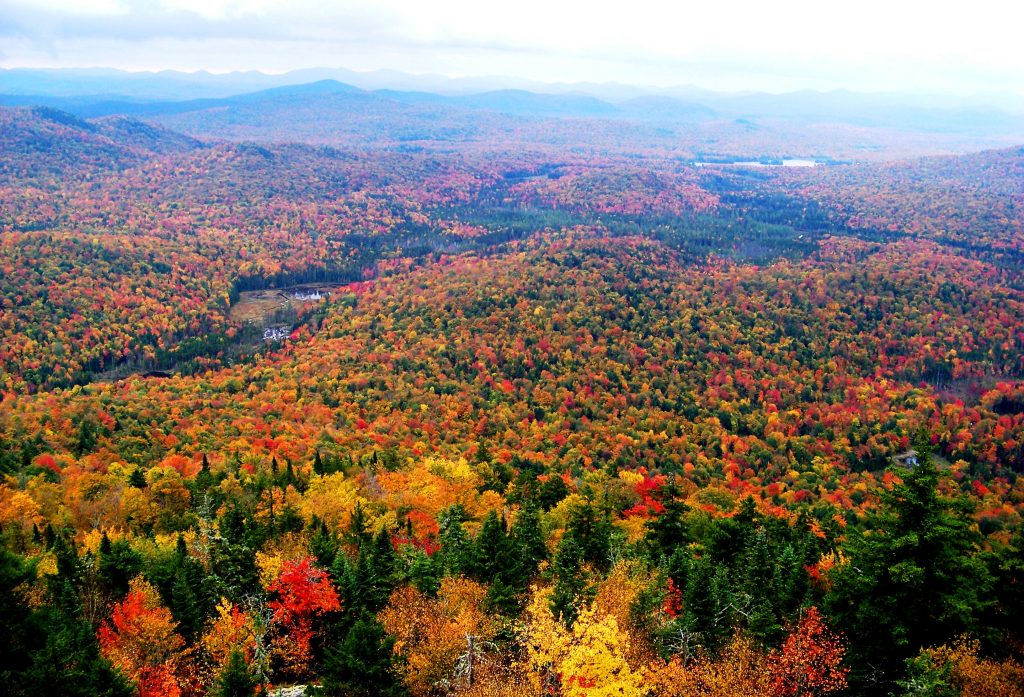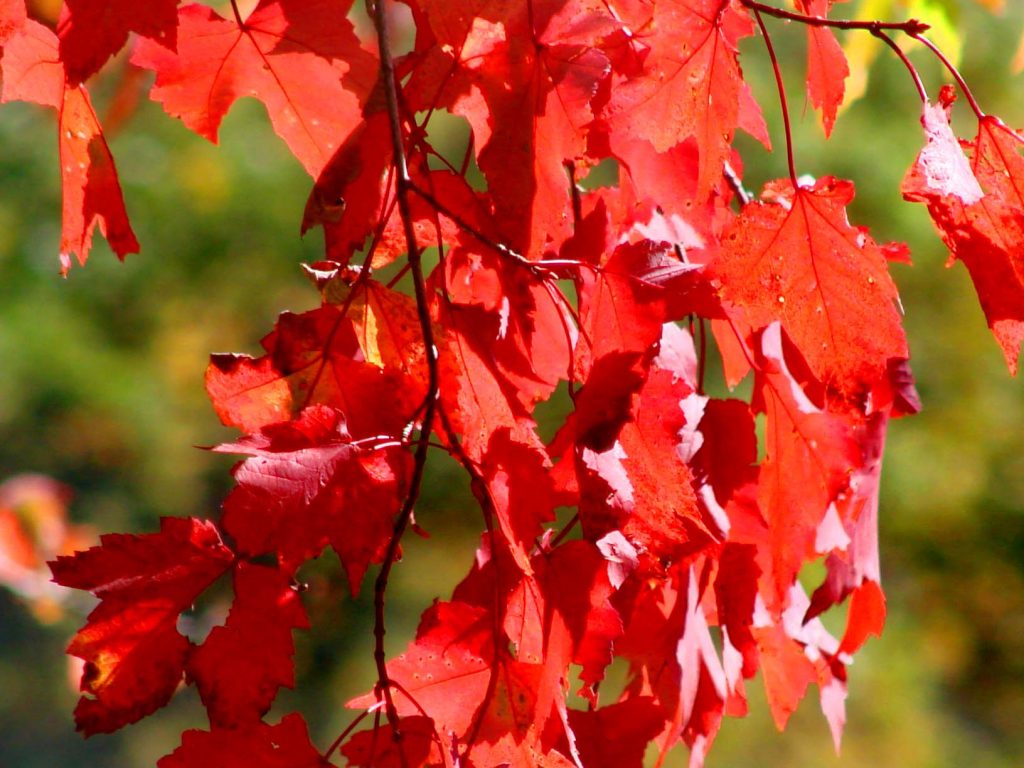
Summary
Every fall, in early October, the beautiful green leaves on our deciduous trees begin to change to a variety of red, yellow, and orange colors. Shorter days and cooler nights trigger these changes. Therefore, the current and future changes in climate could both shorten the length and change the intensity of coloration during the peeping season.
Why Do Leaves Change Color?
In the fall, the leaves of many New England trees change color, creating a stunning display of red, yellow, and orange. The deciduous trees are responsible for this phenomenon. Each year these trees go through a cycle in which they produce, grow, and then drop their leaves. The growth period occurs from spring through mid-summer and then, as autumn arrives, the leaves change colors and drop from the trees.

The green color we associate with leaves is a result of the constant production of the pigment chlorophyll. The pigment absorbs blue and red light most efficiently, while reflecting green light, hence its coloring. Shortening days trigger the iconic color change by causing a layer of cells within the leaf to no longer allow the flow of nutrients to and from the leaf. Chlorophyll production stops when the nutrients are no longer being pushed into the leaves. Then sun exposure causes the remaining chlorophyll within the leaves to break down. At this point, the fall colors begin to show. Chlorophyll covers the pigments responsible for the oranges and yellows during the growing season; when chlorophyll is depleted these pigments become visible. Although the pigments for orange and yellow are produced and stored during the growing season, the pigments for red are only produced during the fall. The red pigment, anthocyanin, results from broken down sugars, a product of photosynthesis. The red, yellow, and orange pigments also eventually begin to break down leaving the last set of pigments, the tannins, which reflect the brown color that is most often visible as the season transitions into winter.

While the day length is the primary reason for the color change, conditions such as temperature and moisture can also affect the fall foliage. For example, the trees most effectively produce anthocyanin when the autumn nights are cool, but temperatures are not quite low enough to produce frost. In a paper summarizing recent research, scientists at Wesleyan University say that frost, in fact, will stop the leaf’s ability to produce anthocyanin and will shorten the length of the color season.
So, How Could Climate Change Have an Effect?
Recent studies investigated potential effects of climate change on fall foliage. Factors like cloud cover could affect the amount of light that the trees are exposed to. Decreased light intensity reduces the rate of photosynthesis and the amount of sugar stored within the leaves. Less sugars to break down will in turn lessen the intensity of the red color. Researchers from Harvard University used observations on eight tree species over an 18-year period to design mathematical models that would predict future fall color and color duration through 2099. Given these models, it is predicted that the onset of color change will be delayed as climate change continues to occur, shortening the season. However, these mathematical representations failed to incorporate the effects of rainfall and moisture, which could also play a role. The amount of moisture in the soil is an important component for leaf color expression. Climate change has caused an increase in aggressive rain storms in the spring and drought conditions during the autumn months. These factors will also shorten the length of time to observe fall foliage. Additional research is necessary to more fully understand climate changes impact on fall foliage, but in the meantime keep on enjoying those beautiful fall colors!
References
Archetti, M., Richardson, A. D., O’Keefe, J., & Delpierre, N. (2013). Predicting climate change impacts on the amount and duration of autumn colors in a New England forest. PloS One, 8(3), e57373. doi:10.1371/journal.pone.0057373
Kyne, A., & Diver, K. (2012). Climate change and autumn colors in New England’s forests. Northeastern Geographer, 4, 34-53.
Palm Jr., C. E. Why leaves change color. Retrieved from http://www.esf.edu/pubprog/brochure/leaves/leaves.htm
The science of color and autumn leaves. (2011). Retrieved from http://www.usna.usda.gov/PhotoGallery/FallFoliage/ScienceFallColor.html
Image Credits
Fall in the Adirondacks: “Fall in the Adirondacks” by Idawriter is licensed under CC BY-SA 3.0
Leaves take on their autumn colors: “A group of stunning maple leaves take on their Autumn colors at the National Conservation Training Center located in Shepherdstown, West Virginia” by Ryan Hagerty from the U.S. Fish and Wildlife Service is not copyrighted
Red maple leaves: “Red Maple” by LadyDragonflyCC ->;< is licensed under CC BY 2.0